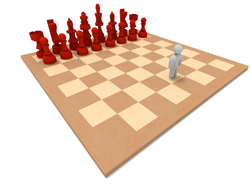Strategy #1
Similarities and difference identification is a teaching strategy used that enables learners to compare and contrast the different elements. This teaching strategy helps in classification, enabling the learners to distinguish between various ideas.
Strategy #2
Note taking and summarising is a teaching strategy that enables the students to keep information for a long time while being able to use it for analysis and presentation purposes. This method of teaching encourages participation through questions and other forms of clarification.
Strategy #3
Provision of recognition and effort reinforcement is a teaching strategy that enables students to understand the link between effort and the recognition they expect. Recognition provides the students with the motivation to continue adding efforts, ensuring that they are able to achieve their goals.
Strategy #4
Homework and practice is a teaching strategy that enables students to practice skills acquired from the previous lectures. This teaching strategy enables the student and teacher to form a communication policy that underlines the time framework and the methods for carrying out the prescribed assignment.
Strategy #5
Nonlinguistic representation as a teaching strategy includes using the following methods to pass a message to the learners: mental images, physical models, pictorial representations, graphical organisers and flow charts.
![]() Looking for innovative teaching and learning resources? We've curated over 1,400 of the best online resources on our independent review platform EdTech Impact.
Looking for innovative teaching and learning resources? We've curated over 1,400 of the best online resources on our independent review platform EdTech Impact.
Strategy #6
Objective setting and feedback provision is a teaching strategy used when learners are expected to develop, personalise and communicate individual objectives. This method also stresses on the student performing a self-assessment to measure success achieved from the lecture.
Strategy #7
Generation and test hypotheses is a teaching strategy that enables teachers to analyse systems while also solving identified problems. This teaching strategy involves the following methods: problem solving, system analysis, decision-making, historical investigation, experimental inquiry and invention.
This teaching strategy helps in explaining the importance of coursework by describing the importance of each element. The analysis of this system helps the students in goal development and tackling of any barriers that they may face achievement of the stated goals. This teaching strategy also involves testing the accuracy of the hypotheses and testing other elements to determine whether different solutions will be arrived at.
Strategy #8
Use of cues, organiser and questions is a teaching strategy that is used to ensure focus is maintained on the relevant important data while ensuring students are able to maintain deadlines by having advanced organisers. This teaching strategy helps students compare different scenarios. It is really helpful in topic identification, addressing of available questions, generation of mental pictures by the student, prediction of the next occurrences and answering the asked questions. A summary is then developed for the information learned and the use of this information stated.
Strategy #9
Concept attainment process is a teaching strategy that enables the teacher to develop examples for use in demonstration of available new concepts. Through use of examples and non –examples, the students are able to relate to the intended concept.
Strategy #10
Mental rehearsal is a teaching strategy that focuses on variations and internalisation enabling students to obtain ideas on ways of altering skills and procedures with response to different elements.
With the availability of so many different strategies, teachers can determine what best suites their intended learning concept and apply it to their classroom setting.
![]() Looking for resources to support your teaching online? Check out our unique list of the best free online resources on our independent review platform EdTech Impact.
Looking for resources to support your teaching online? Check out our unique list of the best free online resources on our independent review platform EdTech Impact.


















